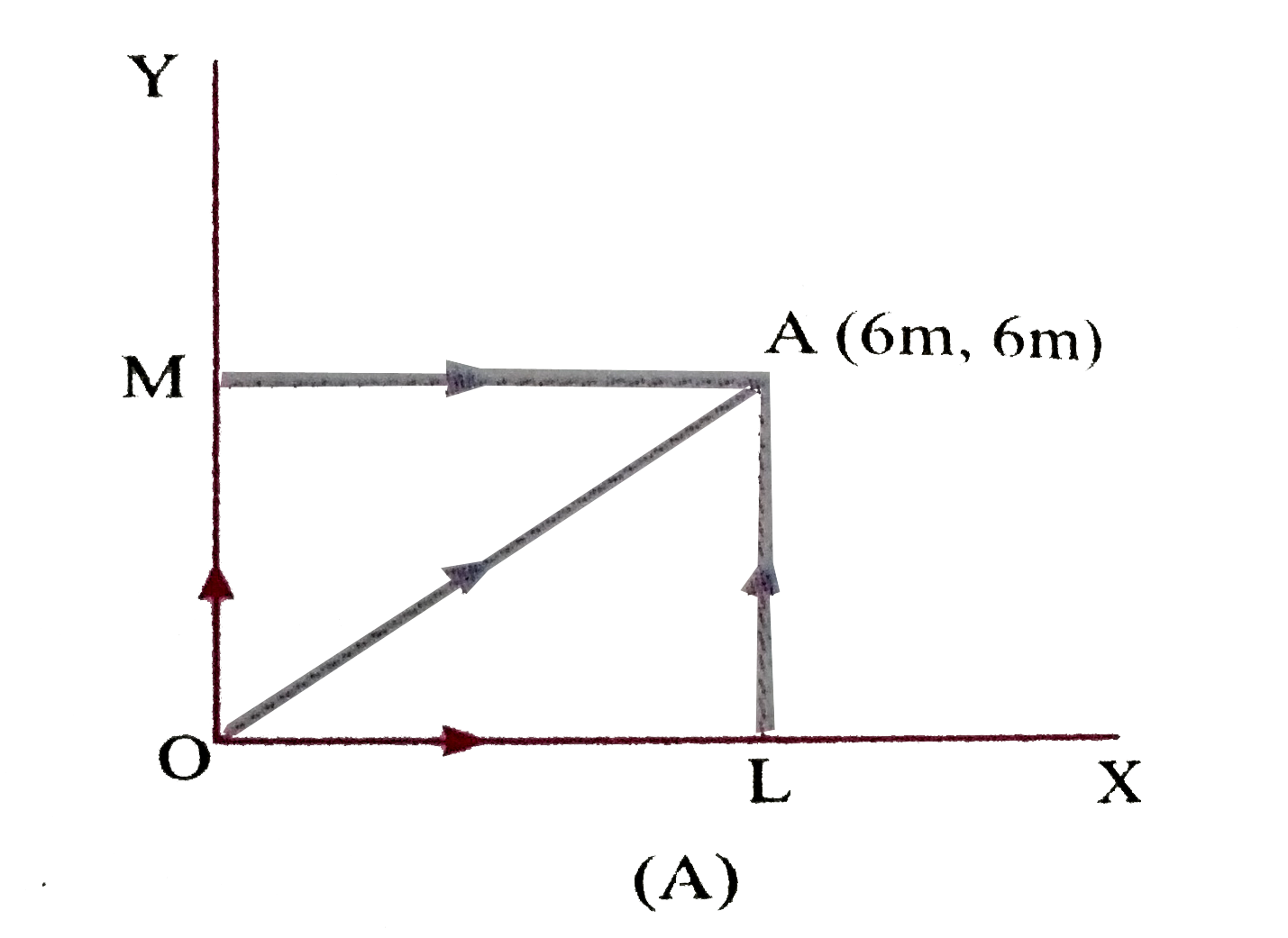If f=αyˆi+2αxˆj calculate the work done if a particle moves along path as shown in (given α=1).
_PHY_E01_009_Q01.png)
The correct Answer is:−0.75
dw=→F.d→r
dw=αydx+2αxdy
A→By=1,dy=0WA→B=∫αydx=α.1∫10dx=α
B→Cx=1,dx=0WB→C=2α.1∫0.51dy=−2α(0.5)=−α
C→Dy=0.5dy=0WC→D=∫0.51αydx
=α.12∫0.51dx=−α4
D→Ex=0.5dx=0WD→E=2α∫xdy=2α.12∫00.5dy=−α2
∴w=α−α−α4−α2=−3α4
Given α=1
W=−(3)/(4)
Topper's Solved these Questions
- BOOK - JEE ADVANCED PREVIOUS YEARCHAPTER - JEE ADVANCEDEXERCISE - MULTIPLE CHOICE QUESTIONS22videos
JEE ADVANCED
- BOOK - JEE ADVANCED PREVIOUS YEARCHAPTER - JEE ADVANCEDEXERCISE - SECTION-III (Comprehension Type )3videos
JEE ADVANCED
- BOOK - JEE ADVANCED PREVIOUS YEARCHAPTER - JEE (ADVANCE) 2020EXERCISE - SECTION 36videos
JEE (ADVANCE) 2020
- BOOK - JEE ADVANCED PREVIOUS YEARCHAPTER - JEE ADVANCED 2020EXERCISE - SECTION-36videos
JEE ADVANCED 2020
Similar Questions
Knowledge Check
- Question 1 - Select One
Consider a force rF=−x3ˆi+y2ˆj.The work done by this force in moving a particle from A(1,0) to B(0,1) along a straight line is : ( All quantities are in SI units )
A1B512C712D34 - Question 2 - Select One
Force acting on a particle moving in the x−y plane is →F=(y2ˆi+xˆj)N,x and y are in metre. As shown in fig. the particle moves from the origin O to point A(6m,6m). The figure shows three paths, OLA,OMA and OA for the motion of the particle from O to A.

Along which of the three paths is the work done maximum.AOABOMACOLADwork done has the same value for all the three paths - Question 3 - Select One
Force acting on a particle moving in the x−y plane is →F=(y2ˆi+xˆj)N,x and y are in metre. As shown in fig. the particle moves from the origin O to point A(6m,6m). The figure shows three paths, OLA,OMA and OA for the motion of the particle from O to A.

Work done for motion along path OA is nearlyA383JB90JC180JD1811J
A force →F=(−yˆi+xˆj)N acts on a particle as it moves in an anticlockwise circular motion in x-y plane. The centre of the circle is at the origin. If the work done by the force is 32πJ in one complete revolution then asSigmaing x,y to be in meters, find the radius of the path.
View SolutionA force →F=ˆi+5ˆj+7ˆk acts on a particle and displaces it throught →s=6ˆI+9ˆk. Calculate the work done if the force is in newton and displacement in metre.
(ii) Find the work done by force →F=2ˆi−3ˆj+ˆk when its point of application moves from the point A(1,2,-3) to the point B (2,0, -5).View SolutionA body is acted upon by a force →F, given by
→F=−k[(cosωt)ˆi+(sinωt)ˆi] undergoes displacement, where the position vector
→r of the body is given by →r=a[cos(ωt+α)ˆi+sin(ωt+α)ˆj]. Find the work done by the force from time t=0 to time t=2π/ω.View SolutionIf the vectors αˆi+αˆj+γˆk.ˆi+ˆkandγˆi+γˆj+βˆk lie on a plane. Where α,βandγ are distinct non-negative numbers, they γ is:
View SolutionLet α,βandγ be distinct real numbers. The points with position vectors αˆi+βˆj+γˆk,βˆi+γˆj+αˆkandγˆi+αˆj+βˆk
View Solution

